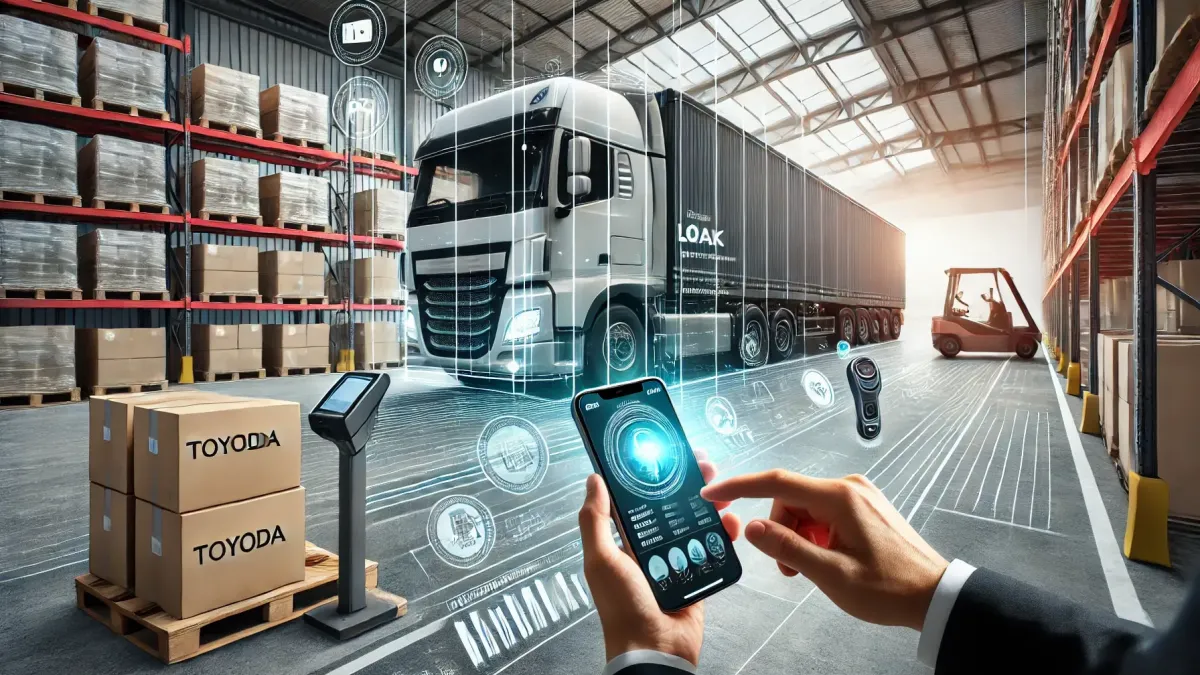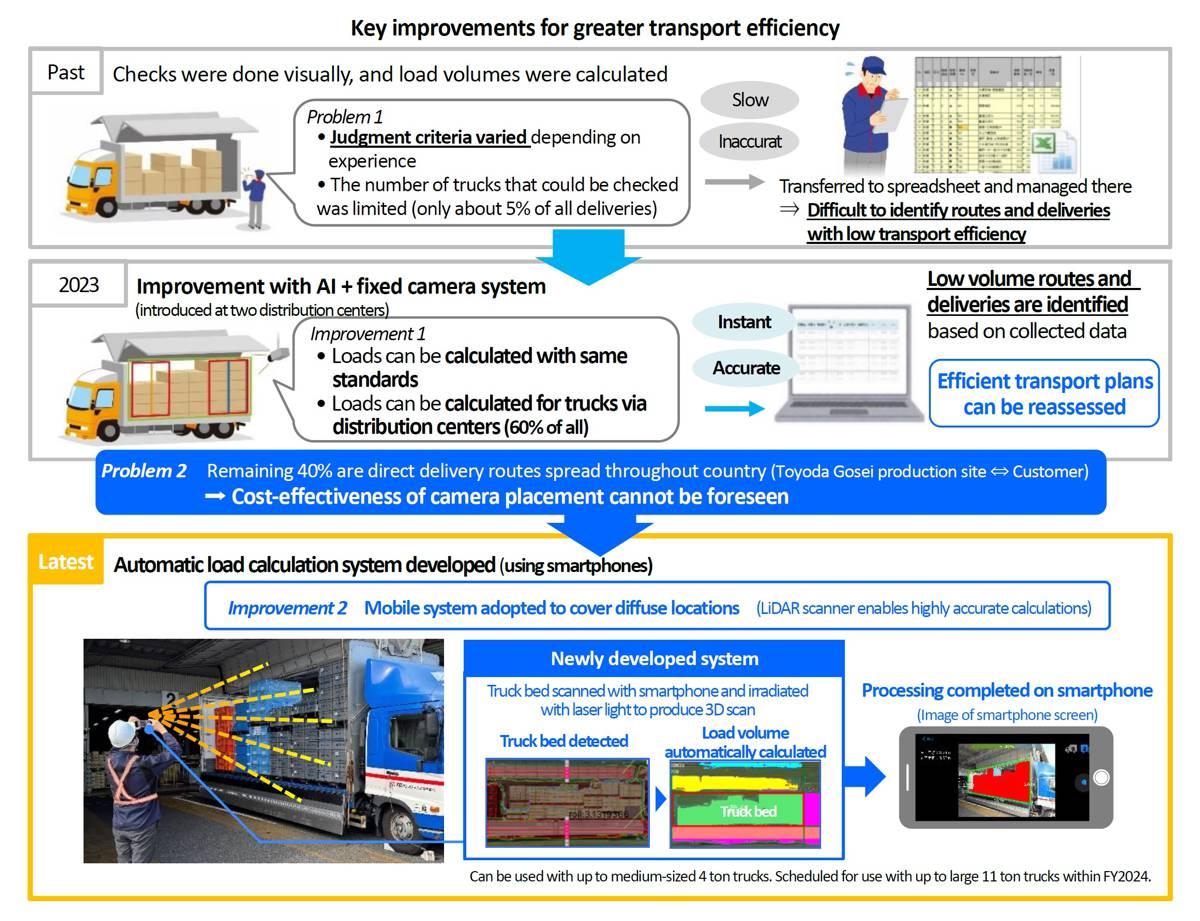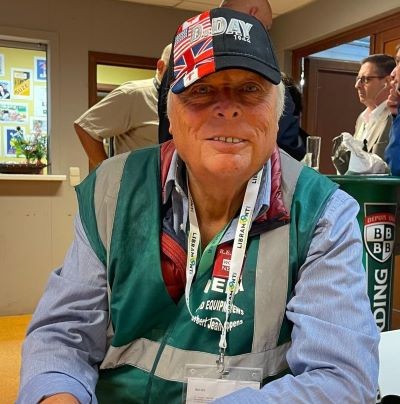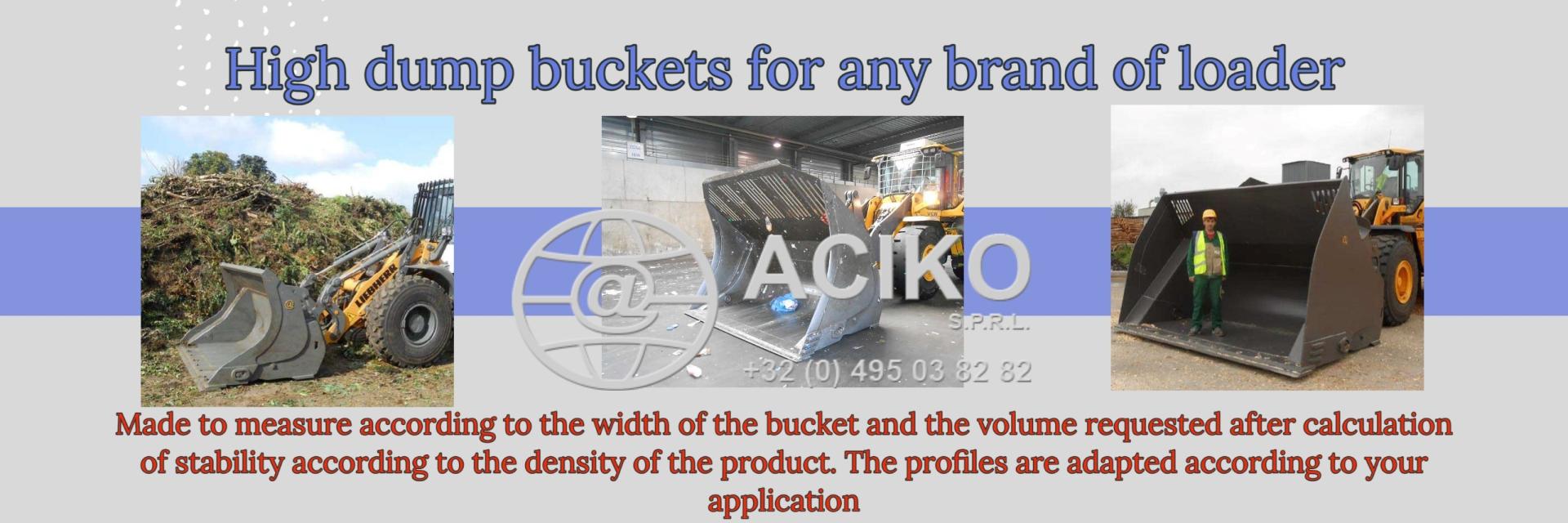R.E.News future Technology-Toyoda Gosei Unveils Smartphone-Based Truck Load Calculation System
 02/12/24-FR-English-NL-footer
02/12/24-FR-English-NL-footer
Toyoda Gosei dévoile un système de calcul de charge de camion basé sur smartphone

 Image R.E.News TOYODA
Image R.E.News TOYODA
Une logistique efficace est l'épine dorsale des industries modernes, et Toyoda Gosei Co., Ltd. a fait un pas de géant en matière d'optimisation du transport. En s'appuyant sur une technologie de détection 3D de pointe, la société a dévoilé un système de calcul de charge basé sur smartphone qui pourrait révolutionner l'affectation et l'acheminement des camions.
Avec son approche innovante, Toyoda Gosei améliore non seulement l'efficacité du transport, mais ouvre également la voie à des opérations logistiques plus durables.
Dans un monde où le temps, c'est de l'argent, la capacité de calculer rapidement et avec précision la capacité de charge des camions peut faire économiser des millions aux entreprises. Traditionnellement, les volumes de charge étaient évalués visuellement par le personnel sur le terrain, ce qui entraînait une variabilité de jugement et des limitations du nombre de camions pouvant être évalués. Ce processus à forte intensité de main-d'œuvre était mûr pour être perturbé.
C'est là qu'intervient le nouveau système de Toyoda Gosei, qui utilise la technologie de détection 3D intégrée aux smartphones pour mesurer les charges des camions avec une précision extrême. L’innovation réside dans l’intégration de la technologie de détection et de télémétrie par la lumière (LiDAR), une méthode qui détermine la distance et la forme d’un objet en fonction de la réflexion de la lumière laser.
Cette solution mobile permet des calculs de charge rapides et précis sans les contraintes d’emplacements fixes. Elle marque le passage des opérations manuelles à un processus rationalisé et axé sur la technologie qui permet de gagner du temps, de réduire les erreurs et de garantir une meilleure utilisation des ressources de transport.
Avant l’avènement du système basé sur smartphone, Toyoda Gosei avait déjà mis en œuvre un calcul de charge alimenté par l’IA à l’aide de caméras fixes. Déployé dans deux des plus grands centres de distribution de l’entreprise, le centre de distribution Miyoshi et le centre de distribution Ichinomiya de TG Logistics, ce système fonctionne 24 heures sur 24 et 7 jours sur 7, éliminant les incohérences humaines dans l’évaluation des capacités des camions.
En automatisant les évaluations de charge, ces centres, qui gèrent 60 % des opérations de transport de l’entreprise, ont considérablement augmenté leur efficacité. Grâce à une optimisation constante de l’utilisation des camions et de la planification des itinéraires, le système basé sur l’IA a jeté les bases d’une application plus large de ces technologies.
Cependant, si les caméras fixes ont révolutionné les opérations à grande échelle, elles étaient limitées à des emplacements spécifiques. L’étape logique suivante était la mobilité, un domaine dans lequel les smartphones brillent.
Reconnaissant la nécessité d’une solution plus flexible, Toyoda Gosei a étendu ses innovations pour inclure un système de détection 3D basé sur un smartphone. Contrairement aux installations fixes, cette technologie mobile permet aux utilisateurs d’effectuer des évaluations de charge n’importe où. Elle est particulièrement utile pour les itinéraires en dehors des centres de distribution centralisés, où le volume de transport représente les 40 % restants des opérations de l’entreprise.
Le scanner LiDAR intégré aux smartphones modernes garantit que les calculs restent très précis, comblant ainsi l’écart entre portabilité et précision. Avec ce système, Toyoda Gosei vise à déployer des améliorations d’efficacité sur les itinéraires de livraison directe et les sites de production plus petits, créant ainsi un réseau logistique plus cohérent.
La science derrière le LiDAR
Le cœur de ce saut technologique réside dans le LiDAR, une technologie de détection avancée qui mesure les distances et les dimensions des objets en analysant les réflexions de la lumière laser. Bien que communément associée aux véhicules autonomes et à la robotique, l’application du LiDAR dans la logistique est transformatrice.
En intégrant cette technologie dans les smartphones, Toyoda Gosei a miniaturisé efficacement la puissance de la détection avancée. Cette démarche rend non seulement le système accessible, mais positionne également l’entreprise à l’avant-garde de la transformation numérique dans la logistique.
Des avantages au-delà des chiffres
Les implications de l’innovation de Toyoda Gosei vont au-delà de l’efficacité opérationnelle. En optimisant les chargements et les itinéraires des camions, l’entreprise réduit la consommation de carburant et les émissions de gaz à effet de serre, contribuant ainsi à des pratiques de transport plus durables.
De plus, cette approche axée sur la technologie minimise les erreurs humaines et garantit la cohérence des opérations logistiques. Le résultat ? Une fiabilité améliorée pour les clients constructeurs automobiles, des économies de coûts pour l’entreprise et une empreinte environnementale réduite.
Alors que le secteur mondial de la logistique s’oriente vers la numérisation, les avancées de Toyoda Gosei la positionnent comme un leader des solutions de transport intelligentes. L’entreprise se concentre désormais sur la mise à l’échelle de ce système basé sur les smartphones dans toutes ses opérations et sur l’exploration de nouvelles innovations.
En associant la technologie LiDAR à l’intelligence artificielle, le potentiel d’optimisation des itinéraires en temps réel et d’analyse prédictive est immense. De plus, à mesure que les smartphones deviennent encore plus puissants, les applications de ce système pourraient s’étendre à d’autres secteurs, du commerce de détail au commerce électronique.
Cette approche innovante souligne une tendance plus large dans la logistique : adopter la technologie pour résoudre des problèmes anciens. En combinant la précision de l’IA, la polyvalence des smartphones et la puissance du LiDAR, l’entreprise démontre que l’avenir du transport réside dans des systèmes intelligents et connectés.
Ce n’est qu’un début. À mesure que la technologie évolue, les possibilités d’amélioration de l’efficacité logistique sont illimitées. Le parcours de Toyoda Gosei sert de modèle à la manière dont les industries peuvent innover pour atteindre la durabilité, la précision et l’excellence opérationnelle.
NJC.© Info TOYODA
---------------------------------------------------------------------------------------------------------------
 02/12/24-English
02/12/24-English
Toyoda Gosei Unveils Smartphone-Based Truck Load Calculation System

 Image R.E.News TOYODA
Image R.E.News TOYODA
Efficient logistics are the backbone of modern industries, and Toyoda Gosei Co., Ltd. has taken a giant leap forward in transport optimisation. Leveraging cutting-edge 3D sensing technology, the company has unveiled a smartphone-based load calculation system that could revolutionise truck allocation and routing.
With its innovative approach, Toyoda Gosei not only enhances transport efficiency but also paves the way for more sustainable logistics operations.
In a world where time is money, the ability to calculate truck load capacity quickly and accurately can save businesses millions. Traditionally, load volumes were assessed visually by on-ground personnel, leading to variability in judgement and limitations on the number of trucks that could be evaluated. This labour-intensive process was ripe for disruption.
Enter Toyoda Gosei’s new system, which uses 3D sensing technology embedded in smartphones to measure truck loads with pinpoint accuracy. The innovation lies in the integration of Light Detection and Ranging (LiDAR) technology—a method that determines object distance and shape based on laser light reflection.
This mobile solution enables quick and precise load calculations without the constraints of fixed locations. It marks a shift from manual operations to a streamlined, technology-driven process that saves time, reduces errors, and ensures better use of transport resources.
Before the advent of the smartphone-based system, Toyoda Gosei had already implemented AI-powered load calculation using fixed cameras. Deployed at two of the company’s largest distribution hubs—the Miyoshi Distribution Center and the Ichinomiya Distribution Center of TG Logistics—this system operates 24/7, eliminating human inconsistencies in assessing truck capacities.
By automating load evaluations, these centres, which handle 60% of the company’s transport operations, significantly increased their efficiency. With consistent optimisation of truck usage and route planning, the AI-based system laid the groundwork for the broader application of these technologies.
However, while fixed cameras revolutionised large-scale operations, they were confined to specific locations. The next logical step was mobility—an area where smartphones shine.
Recognising the need for a more flexible solution, Toyoda Gosei expanded its innovations to include a smartphone-based 3D sensing system. Unlike fixed installations, this mobile technology empowers users to conduct load evaluations anywhere. It’s particularly useful for routes outside the centralised distribution hubs, where transport volume accounts for the remaining 40% of the company’s operations.
The LiDAR scanner embedded in modern smartphones ensures calculations remain highly accurate, bridging the gap between portability and precision. With this system, Toyoda Gosei aims to roll out efficiency improvements across direct delivery routes and smaller production locations, creating a more cohesive logistics network.
The Science Behind LiDAR
The core of this technological leap lies in LiDAR—an advanced sensing technology that measures distances and object dimensions by analysing laser light reflections. While commonly associated with autonomous vehicles and robotics, LiDAR’s application in logistics is transformative.
By integrating this technology into smartphones, Toyoda Gosei effectively miniaturised the power of advanced sensing. This move not only makes the system accessible but also positions the company at the forefront of digital transformation in logistics.
Benefits Beyond Numbers
The implications of Toyoda Gosei’s innovation stretch beyond operational efficiency. By optimising truck loads and routes, the company reduces fuel consumption and greenhouse gas emissions, contributing to more sustainable transport practices.
Moreover, this technology-driven approach minimises human error and ensures consistency in logistics operations. The result? Improved reliability for automaker clients, cost savings for the company, and a smaller environmental footprint.
As the global logistics industry races toward digitisation, Toyoda Gosei’s advancements position it as a leader in smart transport solutions. The company’s focus now is on scaling this smartphone-based system across all its operations and exploring further innovations.
By marrying LiDAR technology with artificial intelligence, the potential for real-time route optimisation and predictive analytics is immense. Additionally, as smartphones become even more powerful, the applications of this system could extend to other industries, from retail to e-commerce.
This innovative approach underscores a broader trend in logistics—embracing technology to solve age-old challenges. By combining the precision of AI, the versatility of smartphones, and the power of LiDAR, the company demonstrates that the future of transport lies in smart, connected systems.
This is just the beginning. As technology evolves, the possibilities for improving logistics efficiency are limitless. Toyoda Gosei’s journey serves as a blueprint for how industries can innovate to achieve sustainability, precision, and operational excellence.
NJC.© Info TOYODA
------------------------------------------------------------------------------------------------------------------
 02/12/24-NL
02/12/24-NL
Toyoda Gosei onthult smartphone-gebaseerd vrachtwagenladingberekeningssysteem

 Image R.E.News TOYODA
Image R.E.News TOYODA
Efficiënte logistiek is de ruggengraat van moderne industrieën en Toyoda Gosei Co., Ltd. heeft een grote stap voorwaarts gezet in transportoptimalisatie. Door gebruik te maken van geavanceerde 3D-sensortechnologie heeft het bedrijf een smartphone-gebaseerd ladingberekeningssysteem onthuld dat de toewijzing en routering van vrachtwagens kan revolutioneren.
Met zijn innovatieve aanpak verbetert Toyoda Gosei niet alleen de transportefficiëntie, maar baant het ook de weg voor duurzamere logistieke operaties.
In een wereld waarin tijd geld is, kan het vermogen om de laadcapaciteit van vrachtwagens snel en nauwkeurig te berekenen bedrijven miljoenen besparen. Traditioneel werden laadvolumes visueel beoordeeld door personeel op de grond, wat leidde tot variatie in beoordeling en beperkingen op het aantal vrachtwagens dat kon worden beoordeeld. Dit arbeidsintensieve proces was rijp voor verstoring.
Maak kennis met het nieuwe systeem van Toyoda Gosei, dat gebruikmaakt van 3D-sensortechnologie die is ingebouwd in smartphones om vrachtwagenladingen met uiterste nauwkeurigheid te meten. De innovatie zit in de integratie van Light Detection and Ranging (LiDAR)-technologie, een methode die de afstand en vorm van objecten bepaalt op basis van laserlichtreflectie.
Deze mobiele oplossing maakt snelle en nauwkeurige lastberekeningen mogelijk zonder de beperkingen van vaste locaties. Het markeert een verschuiving van handmatige handelingen naar een gestroomlijnd, technologiegedreven proces dat tijd bespaart, fouten vermindert en zorgt voor een beter gebruik van transportmiddelen.
Vóór de komst van het op smartphones gebaseerde systeem had Toyoda Gosei al AI-gestuurde lastberekening geïmplementeerd met behulp van vaste camera's. Dit systeem is geïmplementeerd bij twee van de grootste distributiecentra van het bedrijf, het Miyoshi-distributiecentrum en het Ichinomiya-distributiecentrum van TG Logistics, en werkt 24/7, waardoor menselijke inconsistenties bij het beoordelen van vrachtwagencapaciteiten worden geëlimineerd.
Door het automatiseren van lastevaluaties hebben deze centra, die 60% van de transportactiviteiten van het bedrijf afhandelen, hun efficiëntie aanzienlijk verhoogd. Met consistente optimalisatie van vrachtwagengebruik en routeplanning legde het op AI gebaseerde systeem de basis voor de bredere toepassing van deze technologieën.
Hoewel vaste camera's grootschalige operaties revolutioneerden, waren ze beperkt tot specifieke locaties. De volgende logische stap was mobiliteit, een gebied waar smartphones uitblinken.
Toyoda Gosei zag de behoefte aan een flexibelere oplossing en breidde zijn innovaties uit met een op smartphones gebaseerd 3D-sensorsysteem. In tegenstelling tot vaste installaties stelt deze mobiele technologie gebruikers in staat om overal belastingevaluaties uit te voeren. Het is met name handig voor routes buiten de gecentraliseerde distributieknooppunten, waar het transportvolume goed is voor de resterende 40% van de activiteiten van het bedrijf.
De LiDAR-scanner die in moderne smartphones is ingebouwd, zorgt ervoor dat berekeningen zeer nauwkeurig blijven en de kloof tussen draagbaarheid en precisie wordt overbrugd. Met dit systeem wil Toyoda Gosei efficiëntieverbeteringen doorvoeren op directe leveringsroutes en kleinere productielocaties, waardoor een samenhangender logistiek netwerk ontstaat.
De wetenschap achter LiDAR
De kern van deze technologische sprong ligt in LiDAR, een geavanceerde sensortechnologie die afstanden en objectafmetingen meet door laserlichtreflecties te analyseren. Hoewel LiDAR vaak wordt geassocieerd met autonome voertuigen en robotica, is de toepassing ervan in de logistiek transformatief.
Door deze technologie te integreren in smartphones, heeft Toyoda Gosei de kracht van geavanceerde sensing effectief geminiaturiseerd. Deze stap maakt het systeem niet alleen toegankelijk, maar plaatst het bedrijf ook voorop in de digitale transformatie in de logistiek.
Voordelen die verder gaan dan cijfers
De implicaties van de innovatie van Toyoda Gosei reiken verder dan operationele efficiëntie. Door vrachtwagenladingen en routes te optimaliseren, vermindert het bedrijf het brandstofverbruik en de uitstoot van broeikasgassen, wat bijdraagt aan duurzamere transportpraktijken.
Bovendien minimaliseert deze technologiegedreven aanpak menselijke fouten en zorgt het voor consistentie in logistieke operaties. Het resultaat? Verbeterde betrouwbaarheid voor autofabrikantklanten, kostenbesparingen voor het bedrijf en een kleinere ecologische voetafdruk.
Terwijl de wereldwijde logistieke sector raast naar digitalisering, positioneren de ontwikkelingen van Toyoda Gosei het als leider in slimme transportoplossingen. De focus van het bedrijf ligt nu op het opschalen van dit op smartphones gebaseerde systeem in al zijn activiteiten en het verkennen van verdere innovaties.
Door LiDAR-technologie te combineren met kunstmatige intelligentie, is het potentieel voor realtime route-optimalisatie en voorspellende analyses immens. Bovendien, naarmate smartphones nog krachtiger worden, kunnen de toepassingen van dit systeem zich uitbreiden naar andere sectoren, van retail tot e-commerce.
Deze innovatieve aanpak onderstreept een bredere trend in logistiek: technologie omarmen om eeuwenoude uitdagingen op te lossen. Door de precisie van AI, de veelzijdigheid van smartphones en de kracht van LiDAR te combineren, laat het bedrijf zien dat de toekomst van transport ligt in slimme, verbonden systemen.
Dit is nog maar het begin. Naarmate de technologie evolueert, zijn de mogelijkheden om de efficiëntie van de logistiek te verbeteren onbegrensd. Toyoda Gosei's reis dient als blauwdruk voor hoe industrieën kunnen innoveren om duurzaamheid, precisie en operationele excellentie te bereiken.
NJC.© Info TOYODA
-------------------------------------------------------------------------------------------------------------------
Date de dernière mise à jour : 02/12/2024

















